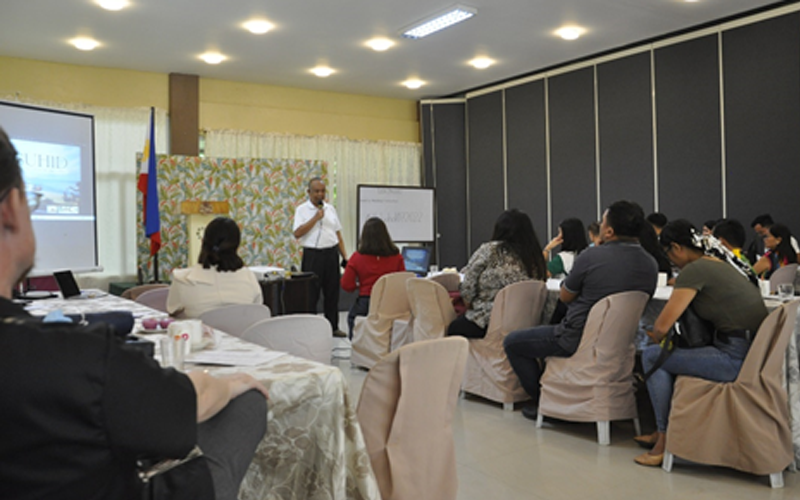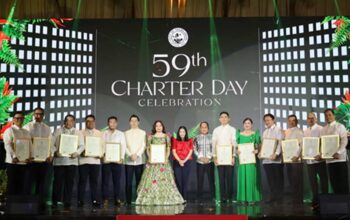
CORTES, Bohol June 3, (PIA) –Why would a tourist pay to see something they can see and experience elsewhere?
This forms part of the core questions that cultural workers under the Bohol Arts and Cultural Heritage (BACH) Council posed and sought to provide answers amidst the proliferation of local festivals, which are unfortunate copies of the regional festivals that do not have the cultural roots that anchor the same to the local traditions and communities.
Holy Name University Office of Culture and Arts Development head Professor Marianito Luspo shared this during the recent Pagsuhid Symposium, which aims to provide Boholano choreographers, writers, directors, cultural workers, cultural bearers and designers with the fitting motivation to reorient Boholanos of the true way of life in a bid to shake off elements of the Sandugo street dancing that are intruding and slowly changing local cultures and tradition.
The Pagsuhid Symposium attempts to find the pre-colonial traces in the cultural heritage of Bohol, as Governor Erico Aristotle Aumentado willed the Sandugo in 2023 to be a celebration of the true Boholano way of life and as a celebration of Boholanos.
He said that Capitol this Sandugo opens six activity streams that Boholanos can join.
Sandugo would feature Tabo (art, culture, crafts, fairs and expos throughout the season), Bibo would be the festivals and pageantry stream with Miss Bohol Sandugo as highlight, Tigi stream with sports and games like the ongoing D League of the Governor’s Cup, the Tapok stream which features reunions and get-togethers, the Sinati stream with family, faith, food, fun, and fitness tours and the Atiman or outreach stream for the Sandugo humanitarian missions, to reflect the Boholano way.
But, cultural workers who witnessed the beginnings of the Sandugo Festival when the Department of Tourism introduced the concept of the Festival Islands, said the first Sandugo Street Dancing Festivals were “poor imitations” of the Sinulog and other regional festivals even if these have no historical or cultural anchors in the Boholano culture.
Even the use of the background elements, motifs and the design in the dancing contingents bear no or questionable roots to the local culture, the chanting and cheering, clearly traceable to a festival in a nearby island and does not reflect anything Boholano, they pointed out.
The Sandugo Festivals in 2005 to 2015 generally adopted Cebu-Sinulog styled steps.
With these realizations and the introduction of the Kuradang in 2016, Bohol is now slowly inching its way back to what is there in the culture and heritage that deserves to be showcased in the street dance.
This early, exposing choreographers who would be the dancing contingent’s steps, costume designs and accompanying design elements would allow them a glimpse and understanding of the elements that they would be using in the Sandugo celebrations, sums up Athena Vitor, BACH Museum Committee chair and Pagsuhid 2023 convenor.
With the Pagsuhid symposia, organizers hope that participating contingents would now be more conscious of the more deserving local elements and designs in the Sandugo street dancing, over the overly borrowed dance that does not really celebrate Bohol and the Boholanos. (rahc/PIA_7/Bohol)



